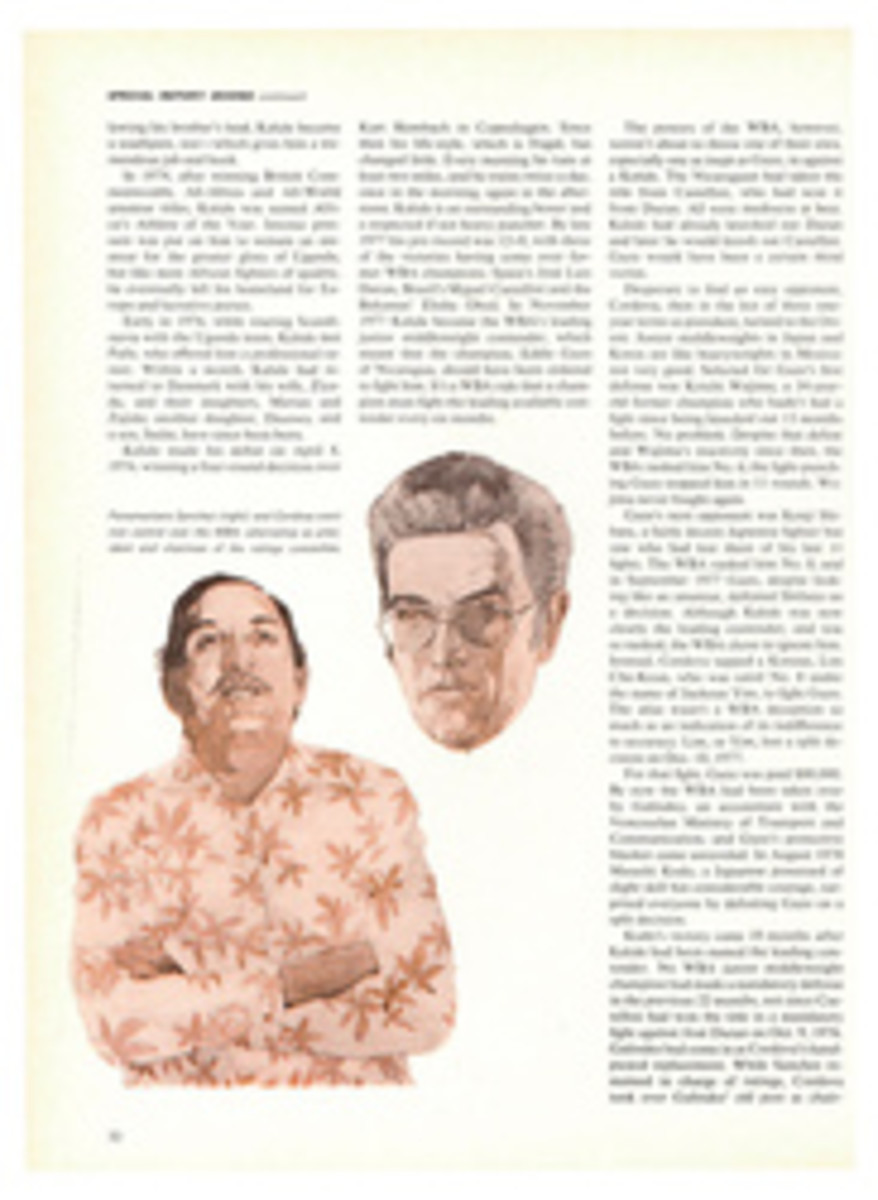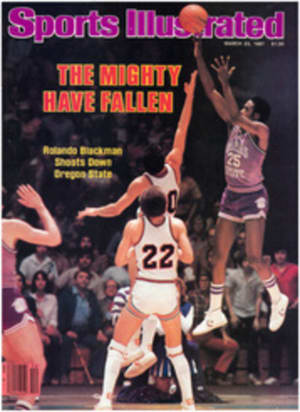
VROOM WITH A BRAND-NEW VIEW
Normally it wouldn't have been such a big deal: a 24-year-old driver making an unscheduled pit stop midway through a 200-lap race he was given only a fair chance of winning. But if CBS Commentator Ken Squier seemed unusually chagrined as he described Terry Labonte's retirement with a blown engine during last month's Daytona 500, it was understandable. Labonte's Buick was one of two cars CBS had rigged with an Australian-made, remote-controlled camera called Racecam that gave the 500 audience some never-before-seen views from the cockpit of a Grand National stock car.
Racecam is one foot high, 10 inches long and weighs less than three pounds. Its inventors believe it's the smallest TV camera ever made. Secured to the roll cage of a stock car, it can capture the ambience of the car's interior, including the driver's movements and the instrument panel, and can swivel to show cars ahead and behind. Racecam beams microwave signals to a helicopter hovering a mile above a track. The copter relays the signals to a receiver in the infield, which in turn bounces them to a truck at trackside. There, a man, using a joy stick and a little box covered with switches, remote-controls Racecam through its R2D2-like functions of dipping, zooming and panning a full 270 degrees.
Everyday motorists can't stand backseat drivers, so why would a pro want 13 million of them? "It was good coverage and good for the sponsors," says Labonte. "I didn't notice it turning and could barely see it in the mirror." Perhaps like Jim Croce's hero in Rapid Roy (The Stock-Car Boy), drivers really want to "do a hundred thirty mile an hour, smilin' at the camera."
Says Geoffrey Healy, who headed the team at Sydney's Channel 7 that sank three years and hundreds of thousands of dollars into developing the system, "When we started, no drivers wanted to know about Racecam because of the extra weight. But since then, the publicity has had drivers virtually falling over each other to get it."
Live in-car coverage first hit the tracks when California entrepreneur Tom Spalding's Racevision camera was mounted inside Benny Parsons' Oldsmobile at Daytona in 1979. But Racevision could only shoot straight ahead. Enter Healy and his mates, who had used helicopters and microwave signals to cover brushfires in the Outback. After a year of tinkering, they unveiled Racecam in the fall of 1979 at Australia's 1,000-km. Hardie Ferrodo race at Bathurst.
CBS stumbled upon the camera a year later when Squier, who was covering a bodybuilding contest in Sydney, went to Bathurst to watch the 1980 Hardie Ferrodo. "I was just nosing around," Squier says. "I looked in the TV booth and ended up seeing what this camera could do. It was incredible." He brought home a video cassette of the race to show CBS higher-ups what he'd discovered, and soon the network obtained exclusive American rights to the system.
At Daytona, CBS could have flaunted its new toy more conspicuously, but Director Bob Fishman used Racecam with restraint, switching to Labonte's car just seven times, only once for more than a minute. The first three segments debunked the notion that race drivers aren't athletes. Labonte's hands on the wheel were vibrating madly. What would have been a slight bump at 60 mph was a real car-shaker at 180. And while other race cars in the vicinity were poor reference points for judging sheer speed, an occasional orange-and-blue Union 76 tower alongside the track came and went in a flash. The viewer experienced both the tedium and tension of racing, learning that it's one part rabbit-led marathon, another part pole vault, with the penalty much higher for grazing the crossbar.
Squier and motor sports analyst David Hobbs noted that Buddy Baker was driving with a crack in his windshield. The best way to "freeze" a moving car is to go to a camera in a vehicle moving just as fast, so, as Baker's Oldsmobile loomed off Labonte's right rear tire, Fishman rotated Racecam and honed in on what looked like a white cyst on Baker's windshield. The shot revealed what Squier and Hobbs couldn't: that the "crack" was a small hole, isolated and well away from the driver's seat.
The last time Fishman went to Racecam he pulled off a nice effect, filling the screen with an infield camera's shot of Cale Yarborough passing Labonte and then using Racecam for an inset of Labonte's view of Yarborough pulling by. Labonte had blown his engine and was fighting the wheel fiercely in the turbulence of Yarborough's wake. Seconds later, Labonte—and Racecam—were out of the 500.
Efforts to activate the other Racecam unit, which had been mounted in Richard Childress' Pontiac, came to naught. There is more electrical interference in a big-engined American stock car than in an Aussie road racer, and static from Childress' ignition system kept breaking up the picture; Healy and CBS Field Operations Chief Ray Savignano are working on that problem. The future may hold other improvements, as well, including an audio link for the driver—something Australian broadcasters have already used.
Based on Racecam shots of his cockpit at Daytona, there's little question what Labonte would say if he were wired for sound. He had chalked HI JUSTIN on his dashboard as a greeting to his infant son back in High Point, N.C. Once Labonte seemed to be saluting the TV audience by raising his right hand in front of the rearview mirror. Alas, Justin was asleep, and Daddy had no way of knowing when the camera was on.
PHOTO
CBS' RACECAM GIVES TELEVISION FANS A SEAT IN THE CAR

